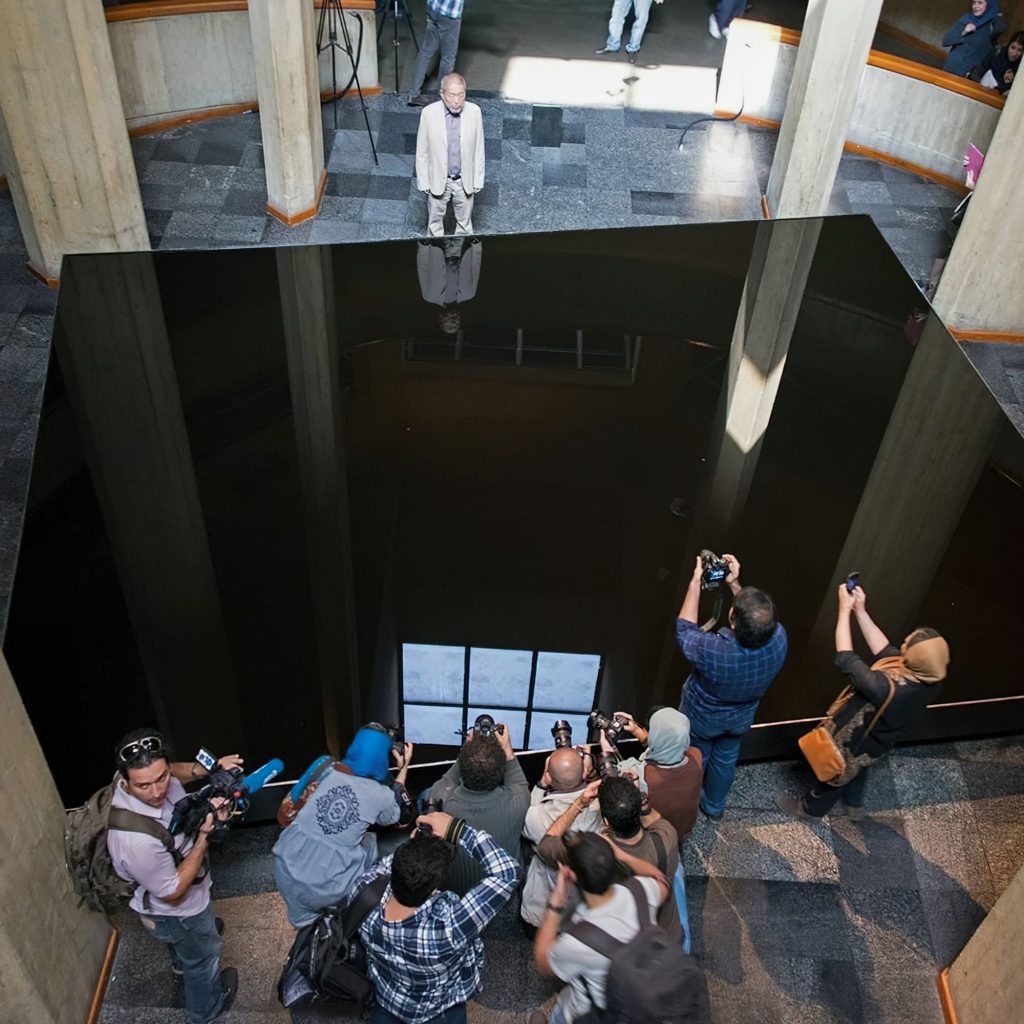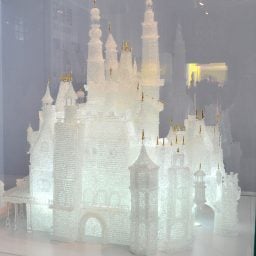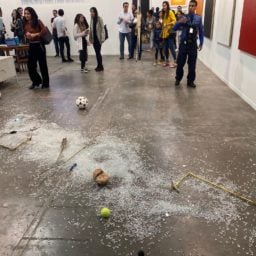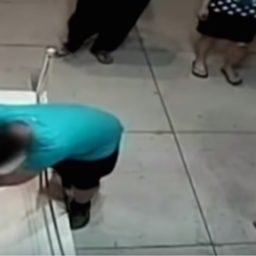The Tehran Museum of Contemporary Art has fired its director, Ehsan Aqai. The dismissal came in the wake of a performance art mishap at the museum that saw Yaser Khaseb accidentally fall into a large, artist-designed pool of oil while performing an aerial act above it.
It was not immediately clear if the two events were connected. Aqai’s dismissal came Monday, March 14, just two days after the accident.
The pool of oil in question is Japanese artist Noriyuki Haraguchi’s Matter and Mind (1977). Consisting of 1,190 gallons of glistening black waste oil, the 14-by-21 foot pool that is meant to take on the appearance of polished black stone.
For his part, Khaseb is known for his aerial performances, which he conducts with his theater troupe, Crazy Body, reports Art Asia Pacific. As seen in a video he posted to Instagram, the March 12 event at the Tehran Museum saw Khaseb contort himself and swing back and forth above the oil pool on a harness, before splashing into the liquid, seemingly by accident, crying out and spraying oil on the nearby museum floor.
The conclusion of the performance was met by scattered applause.
“I’m fine and I survived the (mistake) of the performance,” Khaseb wrote on Instagram, as translated by Google. “I learned in art that art is all about trial and error. But I knew that I should not set foot in another work of art.”
While he expressed regret, Khaseb also painted the accident as a somewhat positive experience. “A work of art can be reborn in contact with other works,” he added. “from the interaction between two works, a new work can be produced.”
The performance, titled Cat of the Silk Road, was part of the opening festivities for “Panj Ganj,” an exhibition about the 12th-century Iranian poet Nizami Ganjavi. According to the Tehran Times, the accident became the subject of a firestorm of criticism from Iranian “art elites and cultural centers” after an unnamed “art expert” posted to Instagram about it.
Days later, Mahmud Salari, Iran’s deputy culture minister for artistic affairs, announced that Ebadorreza Eslami-Kulai had been named as Aqai’s successor, but refused to answer questions about the performance-gone-wrong in an interview with the Iranian Students’ News Agency. The Tehran Times adds that Aqai also declined comment.
The museum issued a statement on Instagram assuring art lovers that Khaseb’s contact with the oil was a regrettable accident, but by no means destroyed Haraguchi’s work.
The oil spilled during the performance “can be replaced,” the museum said, adding that it takes the continued care and maintenance of Matter and Mind seriously. The institution did not respond to inquiries from Artnet News.
Matter and Mind is part of a series of “Oil Pool” works by Haraguchi, one of which also appeared at Documenta 6 in Kassel, Germany, in 1977. Queen Farah commissioned the Tehran version for the museum’s opening the same year, just two years before the revolution put an end to the monarchy.
Haraguchi, a Mono-ha artist who died in 2020, had returned to the museum on at least two occasions to oversee the restoration of the artwork, which is replenished periodically to account for evaporation. The oil was replaced in its entirety in 1996. Another restoration followed in 2017.
“I have made about 20 of these oil pools around the world and there is only one place where it has remained intact like this, and that is here,” the artist told the Times of Israel on the occasion of his 2017 visit. “It feels like time has frozen in this museum since I created this, and it is only me that has aged.”









